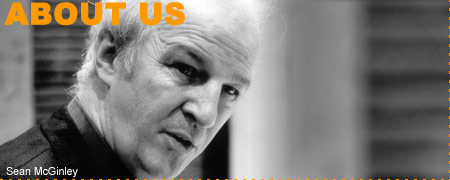| In 1979, after an extensive search for a premises of its own, Druid persuaded one of Galway’s leading merchant families Thomas Mc Donogh & Sons to lease to it a disused tea-warehouse off Quay St in what was then an abandoned and run down area of Galway. It was here that the real character and shape of the company took root and began to grow. The building has been integral to the Druid story for twenty- seven of the company’s thirty-one year history and the creative birthplace for all the company’s work from JM Synge’s Playboy of The Western World through Tom Murphy’s Bailegangaire to MartinMc Donagh’s Lenane Trilogy. The original fit out of the pair of warehouses that make up the theatre was carried out by members of the company in 1979 at a cost of £8,000 (10,000 euro) and because of lack of funds, apart from running repairs and painting, there has been little done to the building since then. In an exceptional and enlightened act of cultural sponsorship, the premises was donated to Druid in 1996 by Thomas Mc Donogh & Sons to mark the company’s 21st birthday Druid hope to begin a major refurbishment of its premises at Chapel Lane. The repair of the building and the renewal of its facilities are essential if Druid is to continue to base its activities in the centre of Galway. The company will adapt the existing buildings to meet contemporary theatrical requirements. The project will be financed in part by a 635,000 euro grant announced in 2003 by the then Minister for Arts, Heritage, Gaeltacht and the Islands, Ms Sile de Valera with additional funds being raised by Druid to complete the project. The bulk of the available funds will be spent on the repair and upgrading of the existing fabric of the building. Below ground works will be avoided to allow possible underlying archaeology to remain undisturbed, with structural works confined to specific architectural elements of the upstanding remains. The architectural approach of the planned refurbishment is to reinforce the authenticity of the existing warehouse structures, to retain them as integral structures. The strategy is based on the principle of conservation and repair. The design interventions are intended to be minor elements of transformation in the gradual development of this historic ‘multi-period’ site. New elements ( staircase, partitions, balcony and entrance canopy) are treated as installations, inserted into the existing structure in such a way as to be reversible and to make clear the distinction between new and old. The spatial arrangements of the existing buildings will thus be radically transformed to achieve maximum effect, in a cost effective manner.
| 
